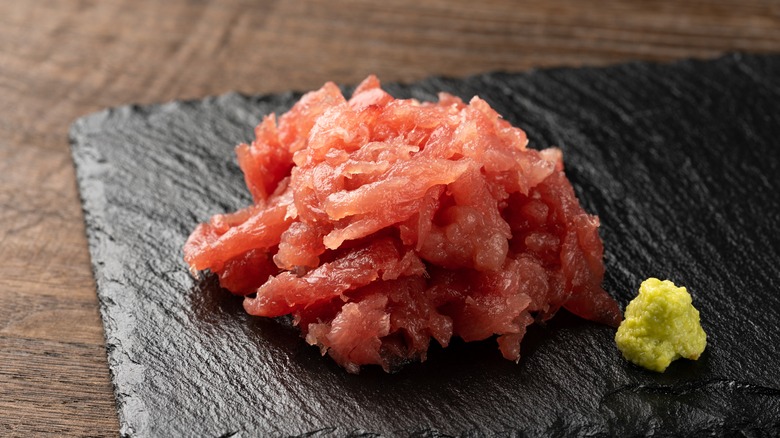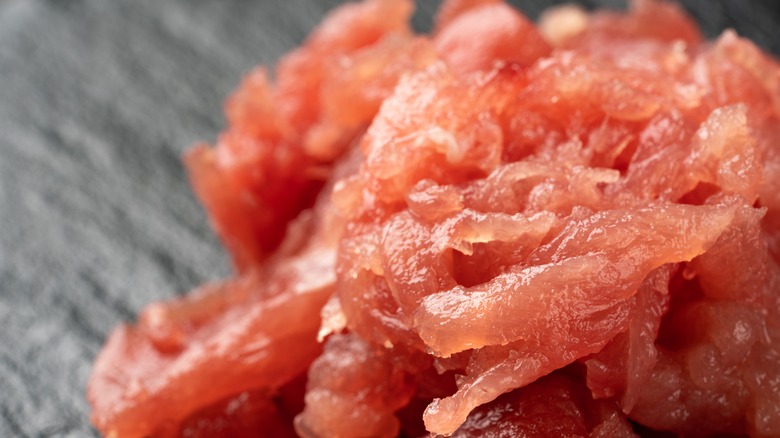Can Eating Tuna Scrape Make You Sick?
First, you're probably wondering what exactly tuna scrape is. You may not be familiar with the name, but if you've ever had a spicy tuna roll, then chances are, you might have already tried tuna scrape. Tuna scrape, also known as nakaochi, is the back meat of the tuna that's been scraped off the bones of the fish after the filets have been removed from the spine, explains Food Safety News. Unlike the controversial pink slime, made from processed beef trimmings, to which tuna scrape has sometimes been unfairly compared, there is no additional processing that occurs after the tuna meat has been scraped off the ribs.
Tuna scrape isn't usually sold directly the consumers in the US. Instead, it is sold to restaurants and markets, which use it to make spicy tuna rolls and other sushi dishes that use minced tuna, explains Time. In some restaurants, like New York City's Mifune and Kanoyama, entire slabs of tuna ribs are served as a delicacy, and diners are given spoons or seashells to scrape off the meat between the ribs themselves — essentially making their own fresh tuna scrape, to be enjoyed as is or in a hand roll.
Eating tuna scrape offers the same risk as eating any raw fish
In 2012, an outbreak of salmonella sickened more than 400 people across 28 states, with 55 requiring hospitalization, reports the CDC. The FDA traced the outbreak to frozen raw yellowtail tuna scrape from Moon Marine USA Corporation, which voluntarily recalled more than 50,000 pounds of the tuna scrape that it sourced from India, where it was processed and frozen.
Although freezing will kill off parasites in raw fish, it doesn't kill off bacteria, including the salmonella responsible for the 2012 outbreak, cautions NPR. It's also not clear whether raw fish that has been ground up is any more risky than whole cuts of raw fish. Raw whole cuts of tuna have also been responsible for outbreaks of salmonella in the past, including raw ahi tuna in 2007 and 2010, per Food Safety News. At the end of the day, tuna scrape is still raw tuna, and eating it carries the same risk inherent in eating any raw fish. It's always a good idea to know where your raw fish comes from and to obtain it, whether in scrape, filet, or other form, from a reputable source.

